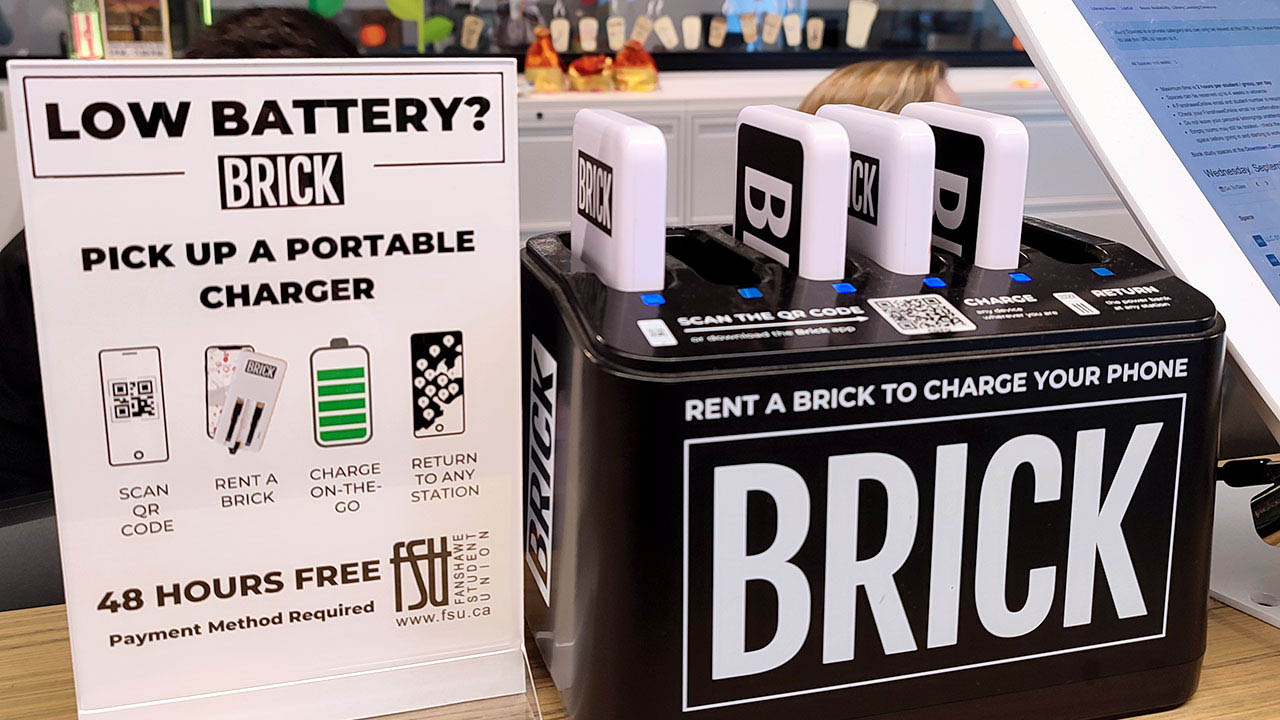Take advantage of portable chargers on campus
 CREDIT: GRACIA ESPINOSA
CREDIT: GRACIA ESPINOSAThe worldwide network of BRICK portable chargers is at Fanshawe College, and the largest station is next to Oasis.
In January, the global network of portable chargers arrived at Fanshawe College thanks to BRICK, a Swedish corporation launched in January 2020. Today, BRICK can be found worldwide, in Ireland, Morocco, Australia, and Peru. BRICK is also continually adding new markets. In this case, the company itself contacted Fanshawe College to install these mobile power bank stations.
“We started with the small power station with six slots at the FSU and library front desk. And then we expanded to a large station (BRICK Skyscraper) with 48 slots in Oasis, and we’re looking to have more stations in other places of the college,” said Fanshawe Student Union (FSU) President Stephin Sathya.
According to the BRICK website, the idea was born out of noticing how dependent people are on their phones. That’s why this start-up considers charging mobile phones when needed to be an essential service. According to a study conducted by BRICK, Millennials (anyone born between 1981 and 1996) and Generation Z, known as Zoomers (anyone born between 1997 and 2013), are the heaviest users of smartphones, which predominantly includes students.
The main difference concerning public charging ports is that people must stay beside the plug until the cell phone charges. With BRICK, a student can rent a portable power bank and return it later to the same station or another on campus. This way, the power bank will be available for someone else.
However, BRICK is for more than just your phone. Sathya explained that students can use them for other devices like tablets. The power banks have iPhone chargers, a mini-USB for Android and a USB-C charger.
The batteries are available 24 hours a day, seven days a week. If a student wants to use them, it is essential to follow these three steps. First, you need to scan the QR code found at each station. Next, you download the application and create an account. Lastly, the student chooses how long to use the portable battery and pays through the application.
The first 48 hours are free, and beyond that the cost is $1 for 30 minutes and $5 for a full day.
“Take it for two days before returning it without any charges. So, if it’s more than three days and you still need to replace it, they charge your credit card,” added Sathya.
The application warns that if a user doesn’t return the power bank at a station after five days, the user will receive a charge to their card of $45.















